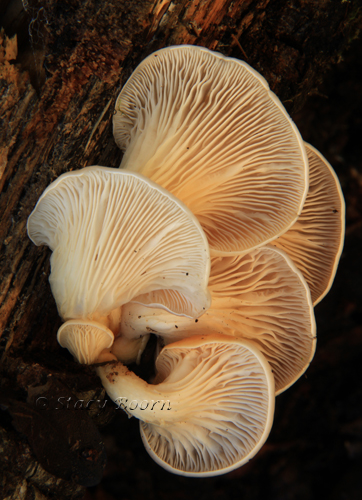Just 40 miles northwest of San Francisco you will find the awe-inspiring diverse ecosystems of Point Reyes National Seashore. My favorite route is Necasio Valley Rd into Point Reyes Station (stopping for the Bear Claws at the Bovine Bakery) and  then along Tomales Bay to Inverness and the western most parts of the park.
 The southern end of Tomales Bay is feed by the Pepper Mill Creek and wetlands and the north end joins the Pacific Ocean and Bodega Bay. With the tides the profile of the bay is constantly changing. Mud flats and migratory birds (like the Western Grebe, below) are impermanent parts of the puzzle. Black Mountain, often reflected in the creek and bay, rises at the southern end behind the town of Point Reyes Station.
The southern end of Tomales Bay is feed by the Pepper Mill Creek and wetlands and the north end joins the Pacific Ocean and Bodega Bay. With the tides the profile of the bay is constantly changing. Mud flats and migratory birds (like the Western Grebe, below) are impermanent parts of the puzzle. Black Mountain, often reflected in the creek and bay, rises at the southern end behind the town of Point Reyes Station.
 On the east side of the bay which you can follow on State Route 1 you traverse rolling grassy hilled dairy farmland and oak woodland. The west side is the Inverness Ridge forested by Bishop Pine and Douglas Fur. This was my destination to hunt for mushrooms which begin to be plentiful after the first rains of fall.
On the east side of the bay which you can follow on State Route 1 you traverse rolling grassy hilled dairy farmland and oak woodland. The west side is the Inverness Ridge forested by Bishop Pine and Douglas Fur. This was my destination to hunt for mushrooms which begin to be plentiful after the first rains of fall.
But the morning light was gracing the creek and beckoned for me to create a wonderful set of images. Sometimes in pays off to stay and photograph in the same area or return there different times of the day. Make panoramas or crop for one when you have a stream, creek or river. I think it gives you the sense of a long flowing artery. The low light and the clouds are what makes this image pop.
 Between the morning and late afternoon light on Pepper Mill Creek I enjoyed photographing some images around the parking lot for Shell Beach. Many mushrooms grow on the fallen and decaying limbs of the pine and fur trees. My approach to the mushroom is to capture them as art in nature thus not making it necessary to always use the image as a means of identification.
Between the morning and late afternoon light on Pepper Mill Creek I enjoyed photographing some images around the parking lot for Shell Beach. Many mushrooms grow on the fallen and decaying limbs of the pine and fur trees. My approach to the mushroom is to capture them as art in nature thus not making it necessary to always use the image as a means of identification.
Mushroom and fungus photography requires getting low – either on your belly or sitting down and communing intimately with your subject. Here I usually prefer a 100mm macro or my 28-135mm lens. Since the gills of many mushrooms can only be seen from the underside you need to get very low. Or in this location just turn over the fallen limb as I did to reveal the beauty of these oyster mushrooms.
“Pleurotus species are characterized by a white spore print, attached to recurrent gills, often with an eccentric (off center) stipe, or no stipe at all.â€Â Its name comes from the white shell like shape and not it’s taste. Although I think they are edible.   But I am not going to try it even as “Oyster Mushrooms Rockefeller” unless served in a restaurant.
I used a reflector to give this grouping a golden glow. If you were making this a scientific recording you would want them to be their true white color. Needless to say with a DSLR you need your tripod so that you can use a small aperture, like f/22 to get depth of field (focus) in all the mushrooms. This will give you a relatively slow shutter speed.
But I have seen people with their point and shoot walk up, stick their camera under the mushroom about an inch away and walk away in less than a minutes’ time. Turns out their image rivals any I have spent hours on – except for the large format print I will make afterwards! And hopefully my composition and lighting. For me creating imagery is a form of visual thanksgiving and transformation while being connected to the source of all that is.
